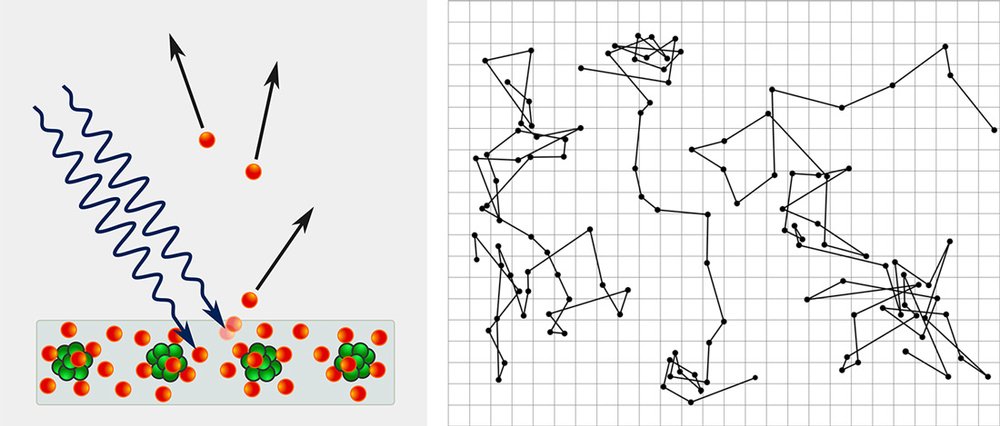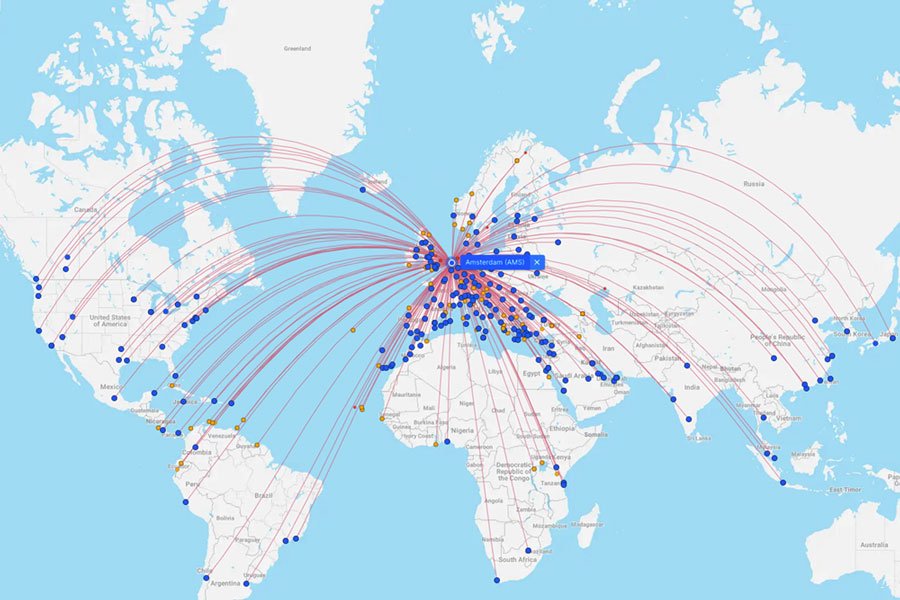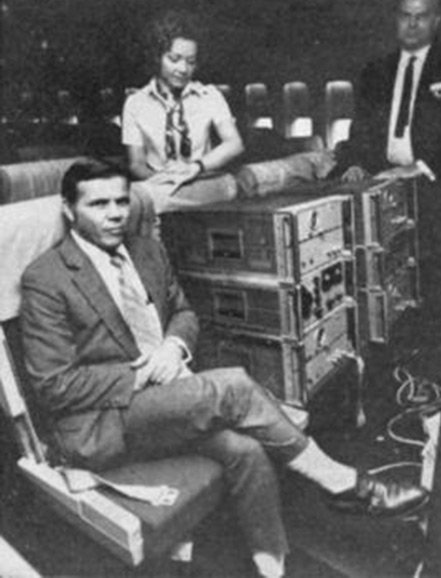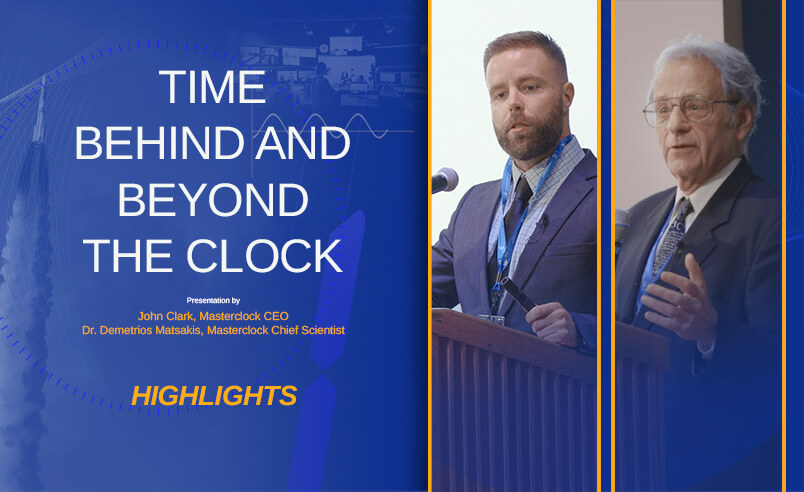12/20/20 By Dr. Matsakis
Good Things Take Time
Nothing epitomizes the creative genius like Albert Einstein. In just one year, 1905, he published four landmark papers. The first explained the photoelectric effect by theorizing that light consists of packets of specific energy that knocks electrons out of atoms. [1] The second proved that molecules exist, by showing that “Brownian motion” of pollen grains in water was due to them being whacked on the side by the fastest-moving of the molecules. [2] Einstein’s third paper was on relativity itself, and the last one gave us the famous E=mc2 formula. Those papers are the foundation of what we call special relativity, because the theory only applies to the special cases where gravity can be ignored. Ten years later Einstein generalized Special Relativity into a theory of gravity, which is called General Relativity.
It has been speculated that if Einstein had never been born, all of the above would have been discovered by someone else in short order. Perhaps. Modern physics is indeed the product of many geniuses. In fact, Poincare came extremely close to finding special relativity – he gave a speech in 1904, right here in St. Louis, using the very term relativity. [3] But I think it may have taken centuries for someone to come up with general relativity. In the ten years Einstein plugged away he made a few mistakes, but we happily ignore them because the end product, an explanation for gravity, was so beautiful.
 Left: Photoelectric effect: Brighter light increase the number of electrons but not their speed. Bluer light increases their speed. Right: Pollen grains jiggle randomly when energetic water molecules wham into them.
Left: Photoelectric effect: Brighter light increase the number of electrons but not their speed. Bluer light increases their speed. Right: Pollen grains jiggle randomly when energetic water molecules wham into them.
His theory of gravity, compressed in two paragraphs, can be expressed in terms of what is called the Principle of Least Action (also called the Law of Cosmic Laziness). Einstein’s version is that everything moves in space and time, from one event, A, to another event, B, by minimizing the square of the time difference (∆t)2 minus the square of their distance difference scaled by the speed of light (c∆d)2 along their path through space-time. So it’s a matter of adding up all the values of √((c∆t)^2 – (∆d)^2 ) as you travel along your world-line. [4]
What we call gravity comes about if space and time themselves are curved, because then the shortest path is no longer straight.[5] Einstein then came up with a formula for how the existence of matter curves the space around it. Since matter curves space, the shortest path between events A and B is no longer a straight line. This is in close analogy to the shortest flying distance between two points on Earth. From looking at the map below, we might conclude the planes are being pulled by some strange gravitational force. Everybody knows those flight paths are due to the airplanes going as straight as they can over a round world, [6] and if we could think in 5-dimensions we would see that the four dimensions of space-time are curved too.
 Airplanes follow the curved space of the Earth’s surface. Throw in 3-d space and time curvature, and now you have gravity. (Image source: FlightConnections.com)
Airplanes follow the curved space of the Earth’s surface. Throw in 3-d space and time curvature, and now you have gravity. (Image source: FlightConnections.com)
Of course, the math for general relativity was pretty hairy [7] and, lucky for Einstein, much of it was developed the century before, by pure mathematicians who were only interested in ideas [8] But the theory has passed every test given it so far. The first proof of the time part was that high-speed cosmic rays made it to the ground without decaying into subatomic particles as quickly as when almost stationary in the lab. This showed that their internal clocks were going slower when in motion.
But the real proof came in 1971, when Hafele and Keating flew atomic clocks around the world [9] and checked how much time they gained or lost compared to “stationary” clocks on a rotating and orbiting Earth. [10] Because they were moving, special relativity says they will run slower. Because they were higher up and in weaker gravity, general relativity says they will run faster. Hafele and Keating had to deal with both effects in the math.

Maybe harder still was to do the measurements right. They had to take five finicky clocks and measure their timing differences every hour, so they could use majority vote to correct the clocks for their random frequency jumps. [11] They took one trip heading East and another heading West, getting different results each way because the rotating Earth was carrying the “stationary” clocks eastward, so the relative motion was less when the airplane was flying that way too.[12]
The slow-down due to motion was about 30% larger than the gravity speed-up going east, for a net loss of 40 nanoseconds. But the gravity effect was almost twice as large as the motion-effect going west, resulting in a net gain of 275 ns. Once all the data were analyzed and reanalyzed, they got exactly what Einstein would have predicted!
The clocks had to buy their own tickets, which were first class because they needed the electric hookups. Unfortunately, the free drinks were not an option, but at least the experiment was a hit with the stewardesses.
The experiment has since been repeated many times, for documentaries and even for fun.[13] But science and technology have gone way past that now. GPS, and its sister GNSS systems, would not even work if their data were not corrected for both special and general relativity. That constitutes a day-in, day-out 24x7 proof of relativity, because if relativity was not true those same corrections would be distortions.[14] So what started in 1905 as Einstein’s purely theoretical understanding has become an indispensable fact of everyday life. So it is with science.
 The relativity equations are built into GNSS module software of the Masterclock GMR5000 other Masterclock timing devices
The relativity equations are built into GNSS module software of the Masterclock GMR5000 other Masterclock timing devices
Footnotes
[1] Newton thought light was particles, but by the nineteenth century physicists had concluded it was waves in a hypothetical mysterious substance called the aether. Einstein took note of the fact that shining more intense light did not change the speed of emitted electrons. Instead it drove more electrons out of the metal. But changing the color of the light did change the speed of the electrons. He concluded that, while light might move like waves, its energy had to come in packets whose energy depended on the color. This is what won him the Nobel prize (not relativity). It also paved the way for quantum mechanics, whose full implications Einstein famously disagreed with. (The artist’s conception of the photoelectric effect is by Ponor.)
[2] Einstein theorized that if molecules existed, and if their speeds had the distribution predicted by Boltzmann’s molecular theory, there would be just enough very energetic water molecules to collide with the pollen grains and jiggle them at the rate Brown reported in 1827. Einstein, at that point a poorly-paid patent clerk with a wife and baby to support, showed how to calculate the effect but did not buy a microscope adequate for a detailed numerical test. In 1908, Perrin did those experiments proving the theory, and for that and many other things he went on to win the Nobel prize in 1926. When the Nazis occupied France all they cared about was his Jewishness, but fortunately he managed to escape to America via Casablanca.
[3] Poincare evidently had complete knowledge of the equations of relativity but didn’t realize their full implications because he believed in the aether (see the first footnote). Here is a translation of his speech, which gave me tingles when I read it: https://en.wikisource.org/wiki/The_Principles_of_Mathematical_Physics. The St. Louis connection, by the way, extends to Dr. Hafele, who was a professor at Washington University.
[4] For an object hypothetically traveling faster than light, the distance traveled () better not be more than c times the travel time (), because the formula gives the square root of a negative number. Fittingly enough, that result would be called an imaginary number.
[5] At the Science of Time conference in 2015, I wrote a paper entitled “Relativistic Time at the USNO”. I claimed that an apple falling from a tree will move towards the ground because it is attempting to use the Principle of Least Action to go through the Earth and then return to where it started, kind of like it was suspended on a spring that got stretched and then released. If it weren’t for the ground thwarting its plan, when the apple returned to its starting point on the tree it would have gone through more space but less time (due to time running slower in the higher gravity potential deeper down). Since the apple’s shorter time is multiplied by the speed of light, a very large number, the Principle is satisfied by comparison to what would have happened if the apple had just stayed on the tree over that period, going through more time but no space at all.
[6] Well, almost everyone. I once sat next to a Flat-Earther on an airplane. I showed him the intercontinental flight routes from the airline’s travel magazine and had him look out my window. I did not convince him.
[7] Wheeler’s famous quote that “black holes have no hair” was only referring to their lack of structure.
[8] If you google Christoffel, Lobachevsky, and Riemann, you’ll only find quiet academic careers. Lobachevsky died in poverty, but now has a prize named after him. He was also honored in a song by the comedian/musician Tom Lehrer, in a dark sort of way.
[9] Interestingly, the clocks had to buy their own tickets, which were first class because they needed the electric hookups. Unfortunately, the free drinks were not an option, but at least the experiment was a hit with the stewardesses.
[10] Perhaps the best-known (false) argument against relativity is the Twin Paradox. There are two twins. One shoots off on a straight-line super-high speed journey, and after a few dozen years turns around and comes back to Earth. Both twins see themselves as stationary and the other as moving. And since moving people and clocks age less, each twin expects the returning one to have aged less going away, and to have also aged less coming back. When the twins do meet, they will immediately know if either aged more. What happens? The paradox’s resolution stems from the fact that we know which twin changed direction. It’s not the acceleration, it is the fact that there are three standards of rest, not two. One standard of rest that sees the twin on Earth as always stationary. The second standard sees the travelling twin as stationary when they are moving apart, but not neither twin is stationary when the traveler is returning. Rather the traveling twin overtakes the Earth-bound one. The third standard sees both twins moving on the outward journey, at different speeds, and only the traveler as stationary when they are coming closer together again. If you do the relativity math consistently in any of those reference frames, you will always find that the travelling twin is younger. Going around the Earth is the same idea, but a little more complicated.
[11] Each of the cesium 5061 clocks they took experienced at least one rate jump, from -17 to +57 ns/day. Modern clocks have rate jumps too, though not as large. Still, the two most misunderstood expressions in the English language are “like clockwork” and “surgical precision”.
[12] When Magellan’s sailors arrived in Portugal, minus their leader, they were shocked to discover that they had arrived one day sooner than indicated on their logs. As the Hafele-Keating experimenters of their day, they both not only provved the world was round, but also that it was rotating! (Jules Verne’s book, Around the World in 80 Days, has the same dramatic ending.)
[13] For example, with a carful of clocks and kids you can do this: http://leapsecond.com/great2005/
[14] When a rocket malfunction caused two satellites from the European Galileo system to be mis-launched into highly eccentric orbits, their relativistic corrections were much larger and far more variable over their orbits than planned. As a result, several papers were published showing how their clock data confirmed relativity to even higher levels than normal GPS and Galileo satellites. The fascinating story of how the satellites were eventually pushed up from their initial orbits inside the Van Allen belts can be found here: https://insidegnss.com/galileo-5-and-6-eccentric-satellites-mission-recovery-and-exploitation-part-i/
About Dr. Demetrios Matsakis
 Dr. Demetrios Matsakis attended MIT as an undergraduate and received his PhD in physics from UC Berkeley, where he studied under the inventor of the maser and laser; and built specialized ones in order to observe interstellar dust clouds where stars are born. His first job was at the U.S. Naval Observatory, building water vapor radiometers and doing interferometry to observe quasars and galaxies at the edge of the observable universe. After developing an interest in clocks, Dr. Matsakis would spend the next 25 years working hands on with most aspects of timekeeping – from clock construction, to running the USNO’s Time Service Department, to international policy. He has published over 150 papers and counting, but gets equal enjoyment out of beta-testing his personal ensemble of Masterclock products.
Dr. Demetrios Matsakis attended MIT as an undergraduate and received his PhD in physics from UC Berkeley, where he studied under the inventor of the maser and laser; and built specialized ones in order to observe interstellar dust clouds where stars are born. His first job was at the U.S. Naval Observatory, building water vapor radiometers and doing interferometry to observe quasars and galaxies at the edge of the observable universe. After developing an interest in clocks, Dr. Matsakis would spend the next 25 years working hands on with most aspects of timekeeping – from clock construction, to running the USNO’s Time Service Department, to international policy. He has published over 150 papers and counting, but gets equal enjoyment out of beta-testing his personal ensemble of Masterclock products.

